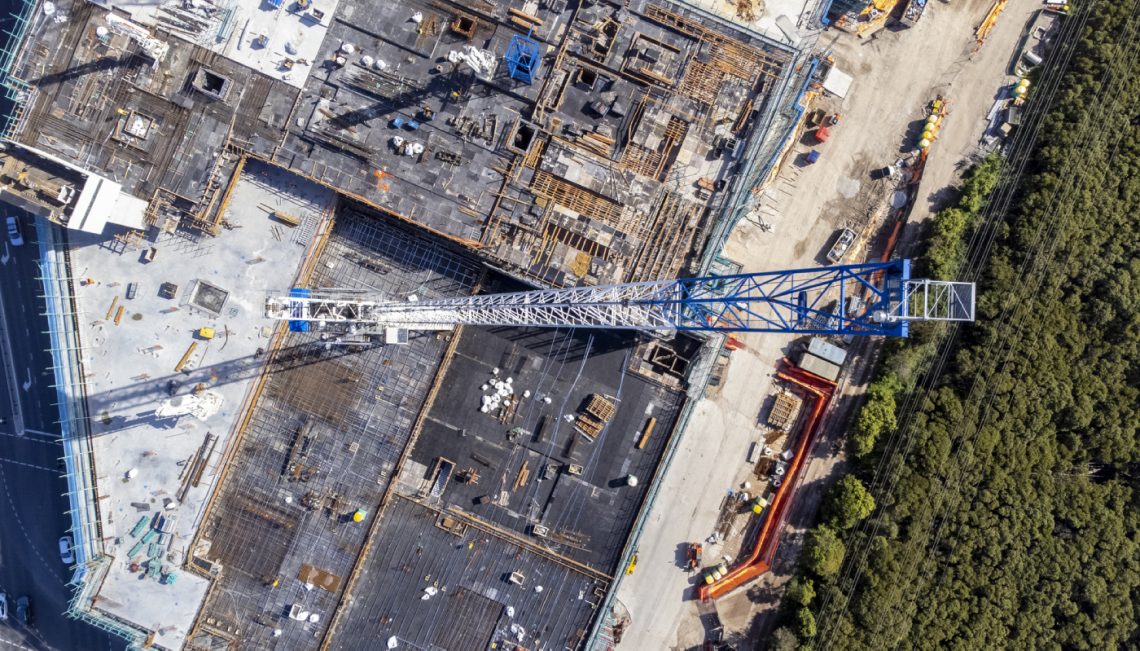A pair of new guides strives to foster better building outcomes and more effective maintenance through a focus on teamwork.
The Building Confidence report, released in 2018, unearthed numerous construction industry problems and regulatory failures, prompting widespread building sector reform.
However, without clear guidance, these new regulations, along with evolving commercial environments, have led to uncertainty, said Engineers Australia Chief Engineer Jane MacMaster FIEAust CPEng.
“This is largely contributing to a lack of understanding of roles and responsibilities in the new landscape,” she said.
On the post-construction side, improper handover and communication can lead to devastating building incidents, such as the 2021 Miami Surfside condominium collapse in the US. While a 2018 engineer’s report warned that prompt repair of concrete deterioration was required to maintain the building’s structural integrity, inaction led to the deaths of 98 inhabitants.
Engineers Australia has released two new guides — the Guide for Design Engineers and Building Certifiers, and Managing Building Defects: Roles, Responsibilities and Collaboration Among Owners, Strata Managers and Engineers — aimed squarely at addressing potential issues in the design, construction and maintenance stages of a building’s life cycle.
“Building sector reform remains a critical area of attention and these guides contribute to alleviating those challenges,” MacMaster said.
“Stakeholders should not be fulfilling their roles and responsibilities in isolation. It’s how you communicate and work with others that counts.”
Building and construction guidance
After the Building Confidence report was issued, different jurisdictions made changes to conflict of interest requirements, including the separation of design and certification processes, said building surveyor Kingsley Lunt, who contributed to the Guide for Design Engineers and Building Certifiers.
“Certain states introduced legislation calling for a consultant building surveyor or design-side building surveyor to give the design team advice, ensuring conflicts of interest with the relevant certifier did not occur,” he said.
This requirement is often misinterpreted as prohibiting correspondence between design engineers and building certifiers.
But the lack of collaboration and communication between these parties leads to poor building outcomes, MacMaster said.
“Buildings are complex systems and are increasingly becoming more complex, with different subsystems such as electrical, structural materials, fire safety, civil and mechanical,” she said.
“As the complexity increases, we have to think about how all these systems work together, who is responsible for each system and how stakeholders should work together to ensure the whole building works well.”
All building projects involve a level of teamwork, Lunt said, and the conflict of interest provisions don’t negate the need for collaboration — as long as the roles and responsibilities are understood and upheld.
“The guide sets the scene as to how buildings are designed, approved and constructed, the roles and responsibilities of each party in those processes, how the conflict of interest requirements fit into that and how collaboration should occur to facilitate a successful outcome,” he said.
“While high level and general in nature, the guide establishes best practice in terms of communication, collaboration, problem solving, record keeping and teamwork,” MacMaster said.
Communication can also occur at any time of a project, which is another area of confusion cleared up in the guide.
“We’re often told that a building should first be designed, with only the finalised design sent to the building certifier,” Lunt said.
However, legislative clauses don’t restrict communication between the different stakeholders to the certification phase.
“These clauses are focused on what can’t happen, including certifiers giving design advice, but you can certainly clarify what’s compliant and what is not compliant — provided it doesn’t include how to amend the design to achieve compliance,” Lunt said.
The post-construction phase
While owners are responsible for the upkeep of buildings, they may not possess the technical expertise to appropriately manage their assets.
As technical experts, engineers should ensure the advice in inspection reports is clear, to prevent owners feeling overwhelmed about costs and disruptions.
Strata managers should act as conduits between owners and engineers, maintaining up-to-date records and ensuring appropriate steps are taken.
To ensure buildings are maintained in an effective way, the owner’s guide outlines the roles and responsibilities of these stakeholders, while facilitating meaningful collaboration.
“Post-construction, what we’re aiming for are well-maintained structures over the life of the building, but achieving this in a cost-efficient manner,” MacMaster said.
Striving for widespread reform
In a larger sense, building sector reform has and will continue to be one of Engineers Australia’s highest priorities, MacMaster said.
“We’ve been working for several years across a range of initiatives and we are continually making submissions to government and other industry bodies,” she said.
This includes advocating for a national registration scheme and a review of the Engineers Australia complaints process.
“Importantly, we’re also providing input to an engineering practice standard in New South Wales for the building sector, and we routinely meet with the regulators across the country’s various jurisdictions,” MacMaster said.
Upskilling the engineering workforce is another priority for Engineers Australia in the quest for building reform.
“In NSW, we’ve developed short online courses in conjunction with the Office of the Building Commissioner (OBC) on waterproofing, cladding and site inspections to address common and high-risk problems with buildings,” MacMaster said. “And in Victoria, we’ve co-hosted webinars on site geotechnical issues.”
In an environment characterised by disputes and lack of trust, the more the various stakeholders understand each other’s roles and responsibilities, the stronger the sector — and building outcomes — will be.
‘Every project differs in terms of the obligations and commercial and contractual requirements, but what remains consistent across all projects and stakeholders is mutual obligation to mitigate rework, transparency when undertaking activities and delivering services, and communicating and collaborating with everyone involved,” MacMaster said.
“That’s how we build trust and transparency, minimise problems and get good building outcomes.”



